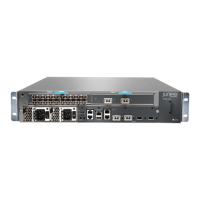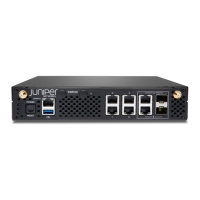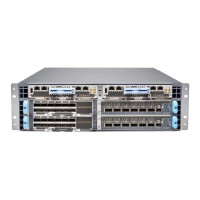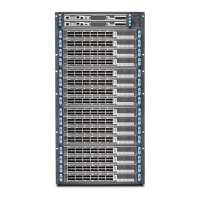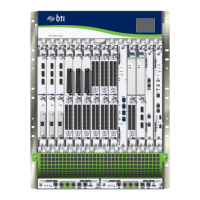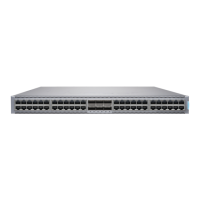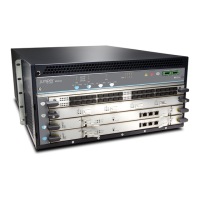Figure 1: SRX210 Deployment Topology
In a typical deployment scenario of the SRX210, the following configurations are used:
•
The SRX Series interface ge-0/0/0 is connected to a typical Internet service provider
(ISP) cable or DSL modem.
•
The protected network is connected to interface ge-0/0/1, fe-0/0/2 to fe-0/0/7 in the
trust zone.
•
The IP address of interface ge-0/0/0 is assigned from ISP either statically or by DHCP.
•
The interfaces ge-0/0/1, fe-0/0/2 to fe-0/0/7 are a part of the default VLAN
(vlan-trust). The protected hosts can be connected to any one of the ports that are
part of the default VLAN.
•
The DHCP server is running on vlan.0 and assigns IP addresses to other interfaces for
the local LAN.
•
The default security policy allows traffic from the trust zone to the untrust zone and
denies traffic from the untrust to trust zone.
•
System services such as SSH, Telnet, FTP, HTTP, HTTPS, and xnm-clear-text are
enabled by default.
Default Port Settings
When an SRX210 is powered on for the first time, it boots using the factory default
configuration.
The SRX210 has the following factory default port settings:
Copyright © 2016, Juniper Networks, Inc.8
Getting Started Guide for Branch SRX Series

